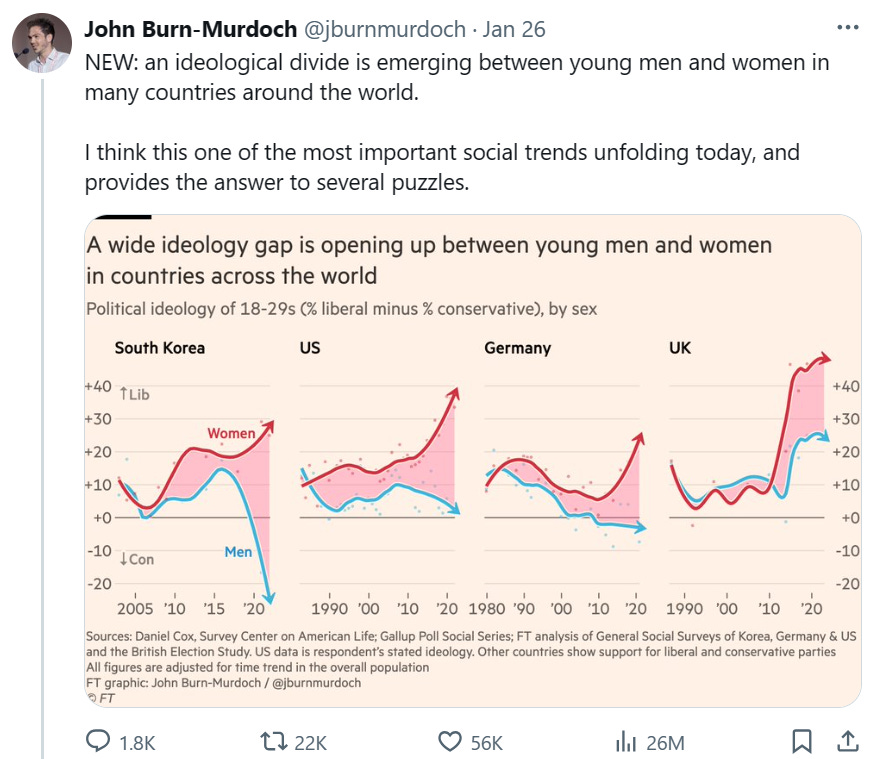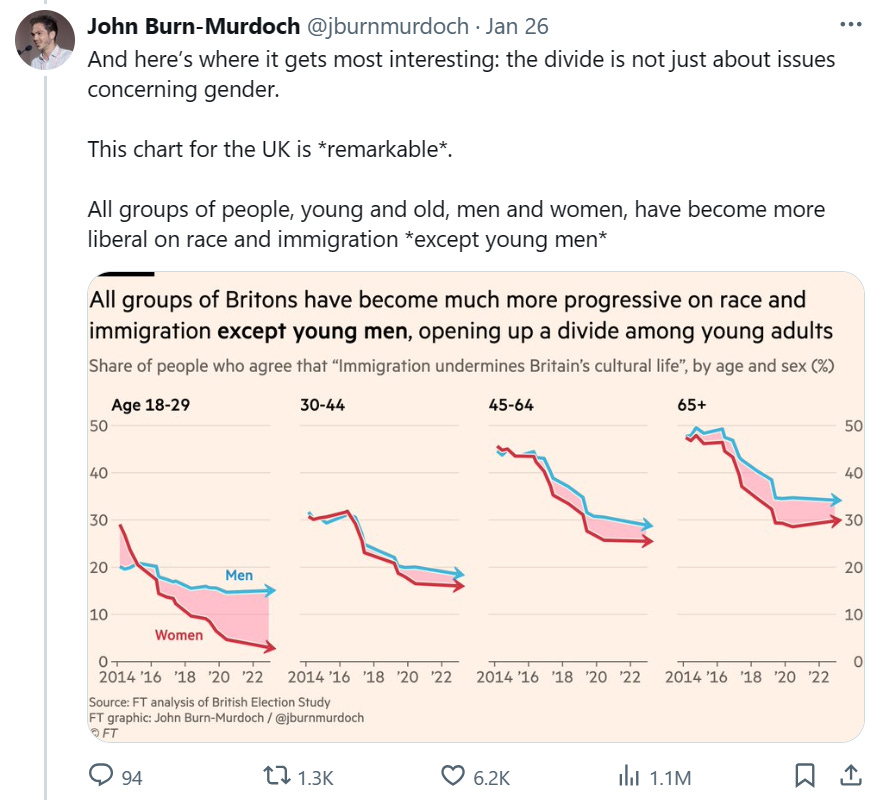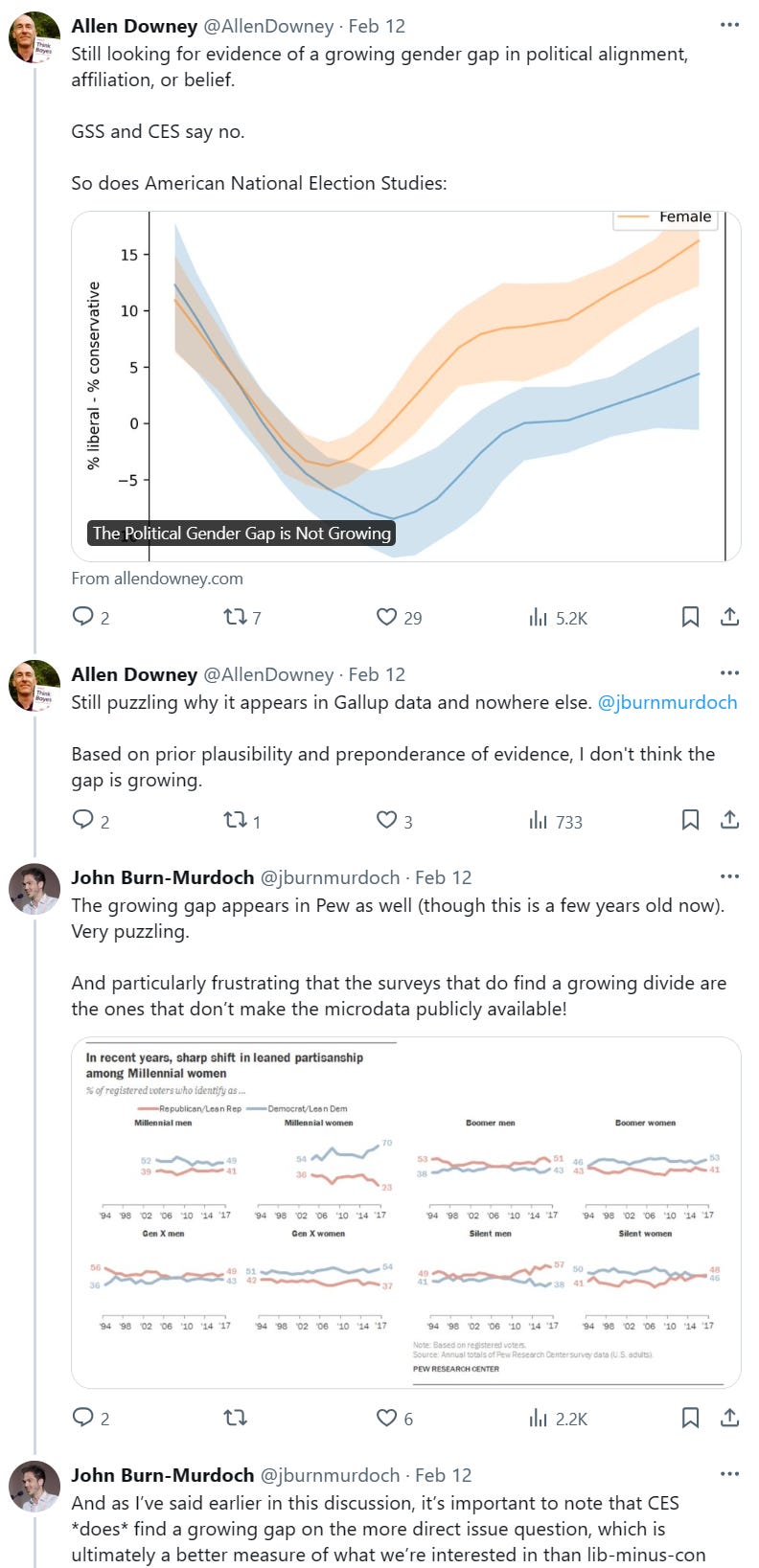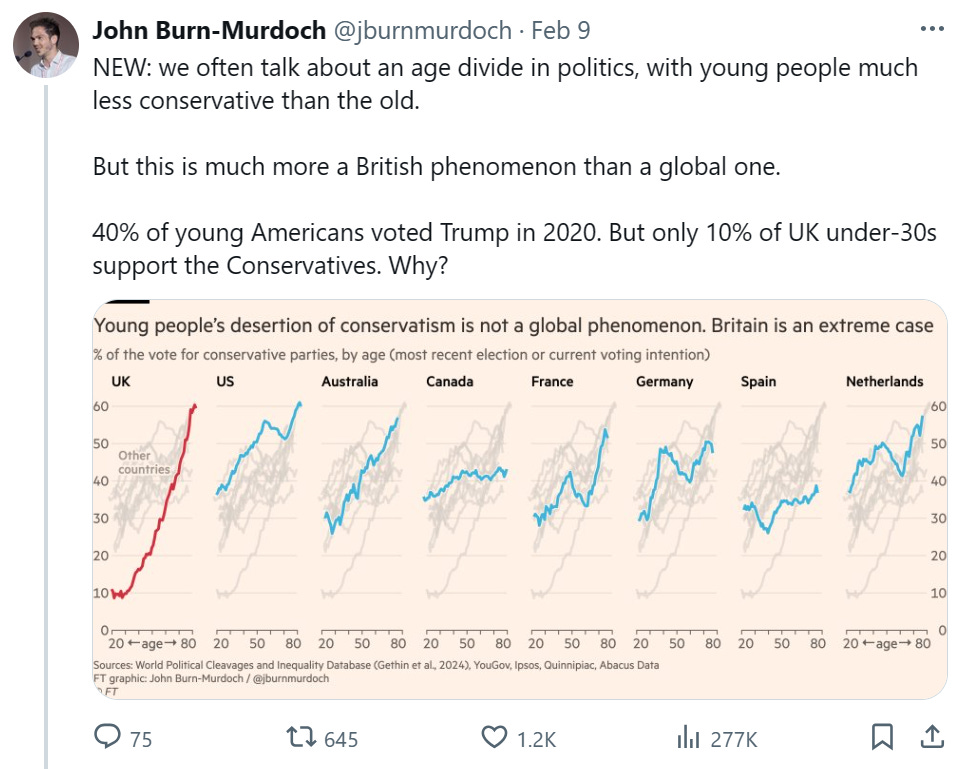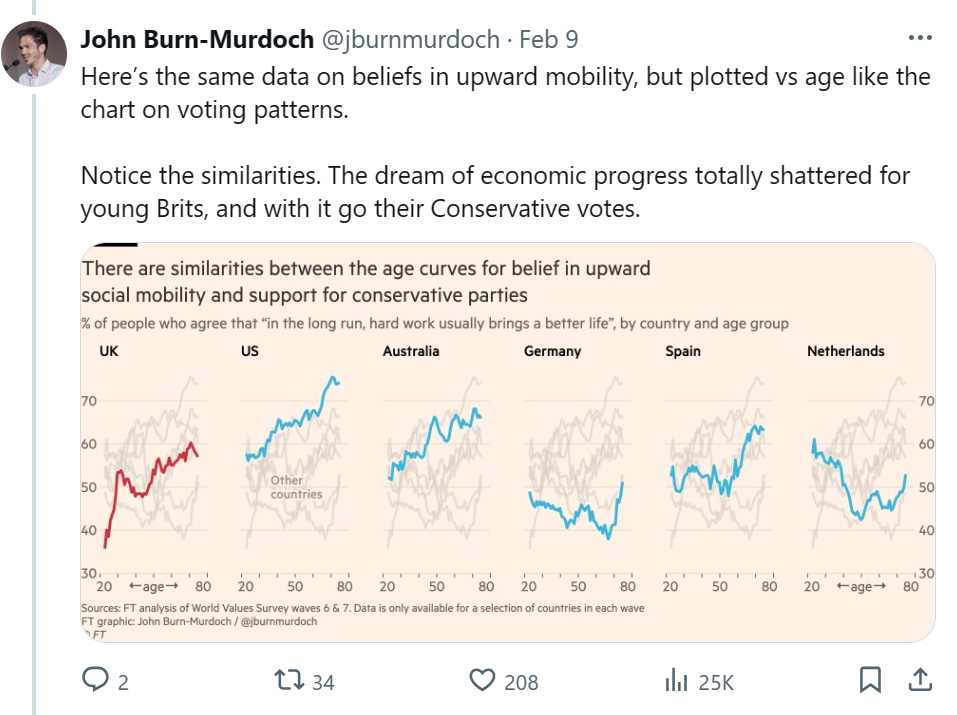Best of #econtwitter - Political polarization by gender, special supplement
A John Burn-Murdoch column in the FT kicked off some good discussion and data munging:
It’s worth pulling out the small footnotes here!:
“All figures are adjusted for time trend in the overall population” (!!)
“US data is respondent's stated ideology. Other countries show support for liberal and conservative parties”
Below, a lot more charts. If you’re skimming, skip down to the section on “A synthesis?” for plausibly the best evidence
Let a thousand replications bloom
There are multiple relevant surveys in (at least) the US — with slightly different questions and different modes — and so:
On The Issues
Additional countries
^and for Andalucia in particular
Cowen’s Second Law
^the first question I would have if I had time to read this paper would be: how do they deal with omitted variables
^“a lot of the shift can be explained by the decline of religiosity… The key insight is that women have always been more [economically] left-wing than men, but that women were also more religious (both vs today and vs men) and that this was a moderating force against those left-wing views. With religion in retreat, those views now take voice.”
A synthesis?
^“But there is significant country-level variation”, heterogeneity 🤤. “Data is an unreleased version of the WPID database thanks to @amorygethin. Also thanks to @WouterLeenders.”
^the first question I would have if I had time to read the codebook would be: what data is this
Bonus: polarization by age in the UK
^not the only thing that happened in the mid 2010s but
^thread also includes some coverage of age polarization in East Asia


